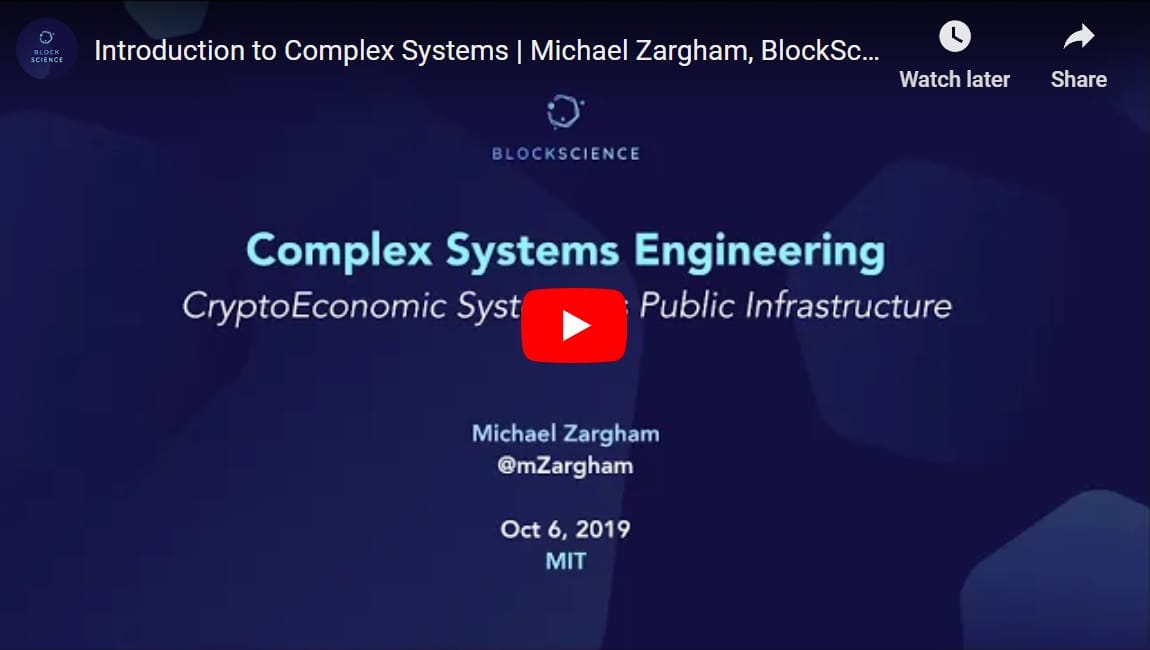Cryptoeconomic Systems as Public Digital Infrastructure
BlockScience Chief Engineer Dr. Michael Zargham discusses the concepts, tools, and techniques for engineering complex digital infrastructure systems.
Recorded during the Cryptoeconomic Systems Summit, in October 2019, in this post, we share Dr. Zargham's event presentation slides and a summary version of the video transcript to provide a chronological overview of the following topics presented:
- Complex Systems Engineering
- Blockchain-Enabled Economic Systems
- Complex Adaptive Dynamics Computer-Aided Design
- Adaptive Systems
- Complex System Design and Analysis
- Cyber-Physical Systems
- Systems Engineering Lifecycles
Complex Systems Engineering
[00:00:00] Dr. Michael Zargham introduces complex systems, engineering systems design, and engineering methodology for developing digital infrastructure. To explain why systems are complex he highlights the important role of feedback loops within human, social, and economic systems.

“The curious task of economics is to demonstrate to men how little they really know about what they imagine they can design.
― Friedrich Hayek, The Fatal Conceit: The Errors of Socialism
[00:01:08] The cryptoeconomic space offers examples of how people can modify the rules that prescribe how we interact with each other. This highlights risks and limitations and the need to examine what we can and can't do with the tools, techniques, and knowledge that we have.
Complex Systems Approach
“If a factory is torn down but the rationality which produced it is left standing, then that rationality will simply produce another factory. If a revolution destroys a government, but the systematic patterns of thought that produced that government are left intact, then those patterns will repeat themselves. . . . There’s so much talk about the system. And so little understanding.
—Robert Pirsig, Zen and the Art of Motorcycle Maintenance”
[00:02:00] Referencing Zen and the Art of Motorcycle Maintenance, it is observed that if we change a system by removing problematic phenomena without removing the systemic impetus, the problem will recur. This is an important reminder that we should not seek to replicate conventional systems, and instead pursue the risks and rewards of innovation.
Non-Trivial Interacting Parts
[00:03:00] Complex systems have non-trivial interacting parts, yet even understanding the parts, and how they work is not sufficient to determine how the system will behave. Social systems, can not be resolved at the level of understanding the part, and economic systems are social systems that also contain political and financial elements and complex relationships.
Blockchain-Enabled Economic Systems
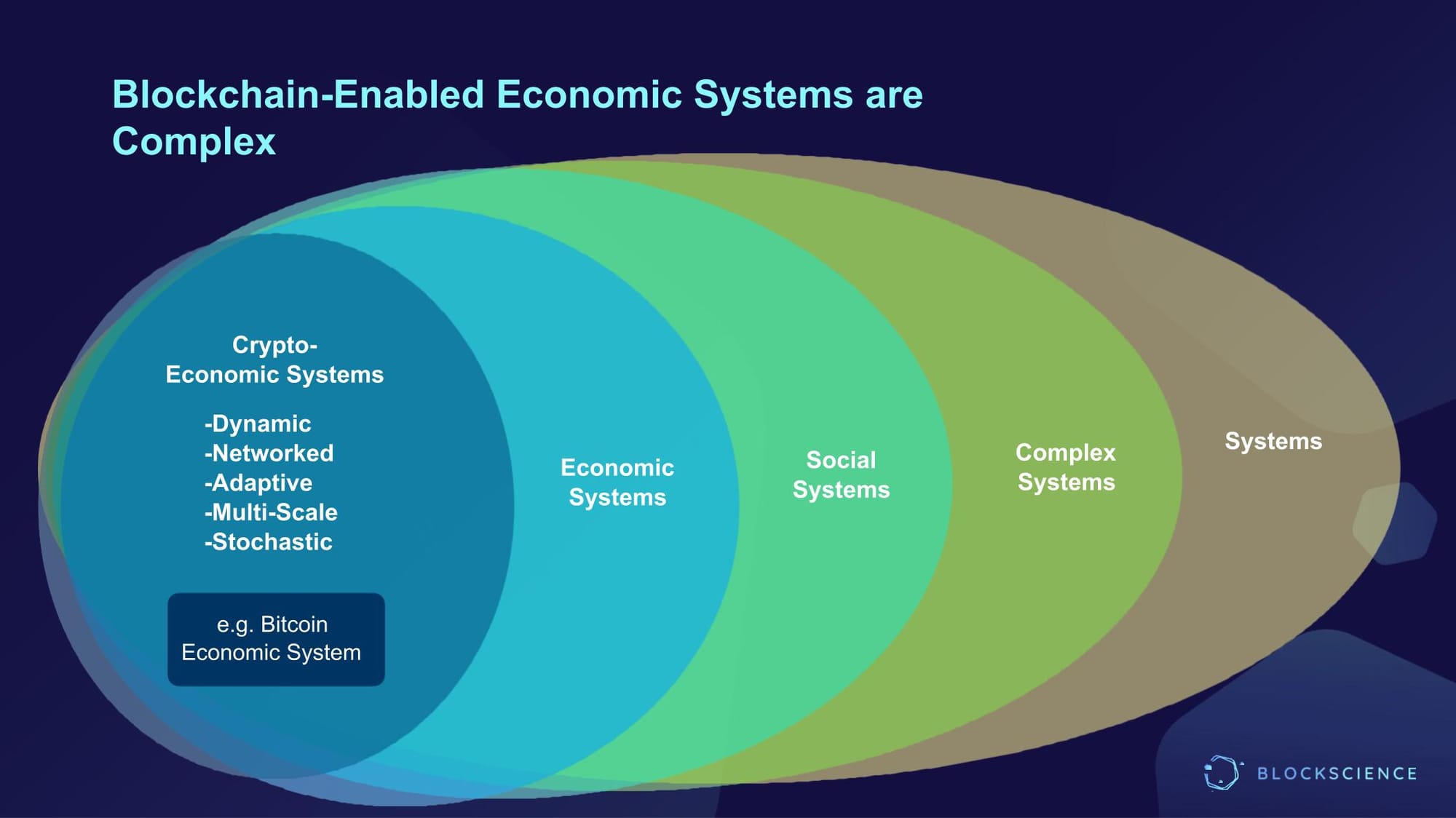
Social & Economic Infrastructure
[00:04:22] Cryptoeconomic systems are technically skeletoned social and economic systems with a backbone of information, wherein cryptographic proofs allow us to do new things, within the context of the surrounding community.
We need to think about these systems as social and economic infrastructure, and in more technical terms, as dynamic, networked in the sense that they are embedded on graphs, and adaptive in the sense that they both 1) change and 2) can change the way they change.
As multi-scale systems, we must reason about how the system (as a whole) affects the incentives of the agent, and how the agent's actions affect the system as a whole. And lastly, they are stochastic, meaning they have at least randomized elements in the sense of modeling and may not be predicted precisely.
Networked Systems Multi Graphs
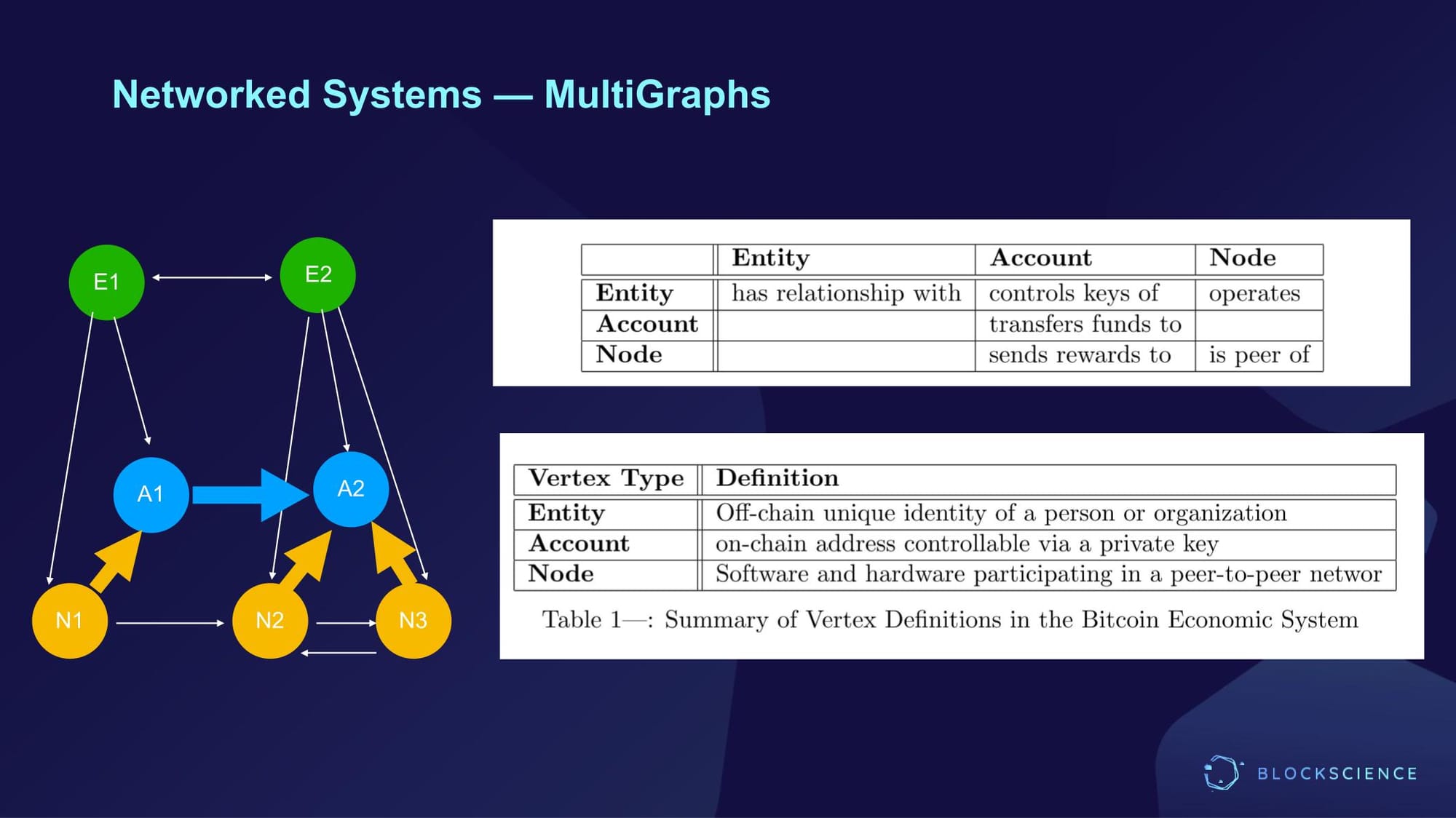
[00:07:25] Working through the example of Bitcoin, Zargham highlights that to understand the system of even a relatively simple blockchain network, your minimum representation of the system is three layers - social, economic, and technical networks.
Multi-Scale Relationships
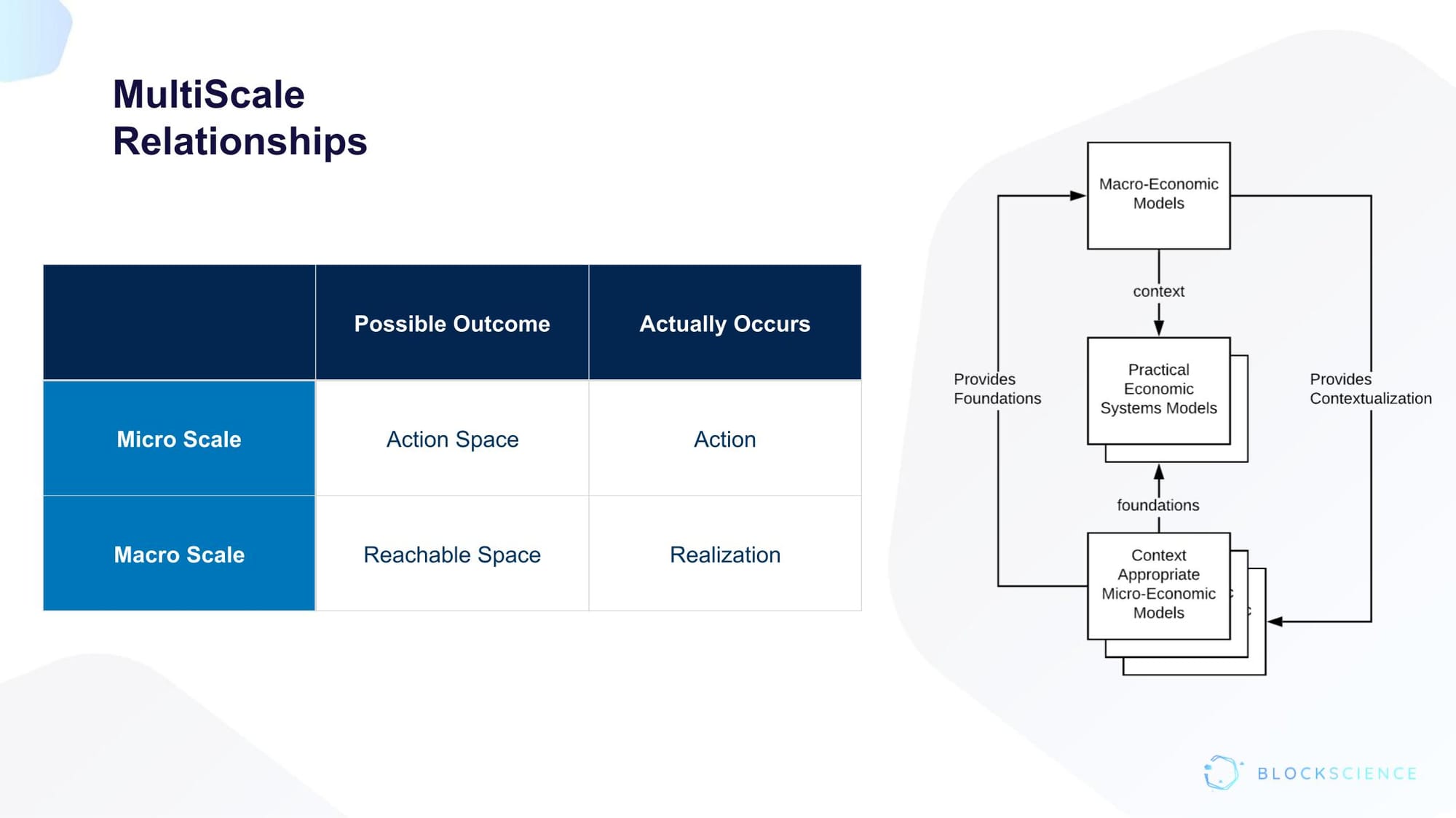
[00:09:00] In response to the question "What makes a practical economic model?" Zargham appeals to the Lucas critique on the grounds that there is a dependence between the microeconomic foundation and the macroeconomic phenomena.
If you can't contextualize using a macroeconomic frame, and provide foundations from a microeconomic frame, there's a decent chance that you're floating off in no man's land, and you really can't anchor your conclusions in reality.
The reality is that we build, launch, and learn - after the fact - that we didn't provide the foundations needed to make strong inferences about what we observe.
Statistical Inference
[00:10:10] In a formal systems engineering domain, we separate what happened (the realization), from possible outcomes (reachable space), and to avoid mistakes with statistical inference, when looking at complex systems, we must remember that we only see one realization. Using the example of rolling a pair of dice Zargham illustrates a common trap in empirical analysis reminding us that hindsight alone is not the full picture.
You have to think about what you knew and could have known at the time that you made the decision, not just what you wish you had done in hindsight.
Generalized Differential Equations

[00:11:24] In practice with computational social science experiments, we develop feedback loops and computational models, as detailed in the presentation slide. These models are sufficiently general to define a whole network of agents, with the potential for individual or aggregate policies with a feedback loop that allows for emergent properties. While the system could converge to an equilibrium, it may have non-equilibrium dynamics, which can be seen with differential equation-style models.
Complex Adaptive Dynamics Computer-Aided Design
[00:13:00] Complex Adaptive Dynamics Computer-Aided Design (cadCAD) is an open-source Python package that assists in the rigorous design, testing, validation, and optimization of complex systems through simulation.
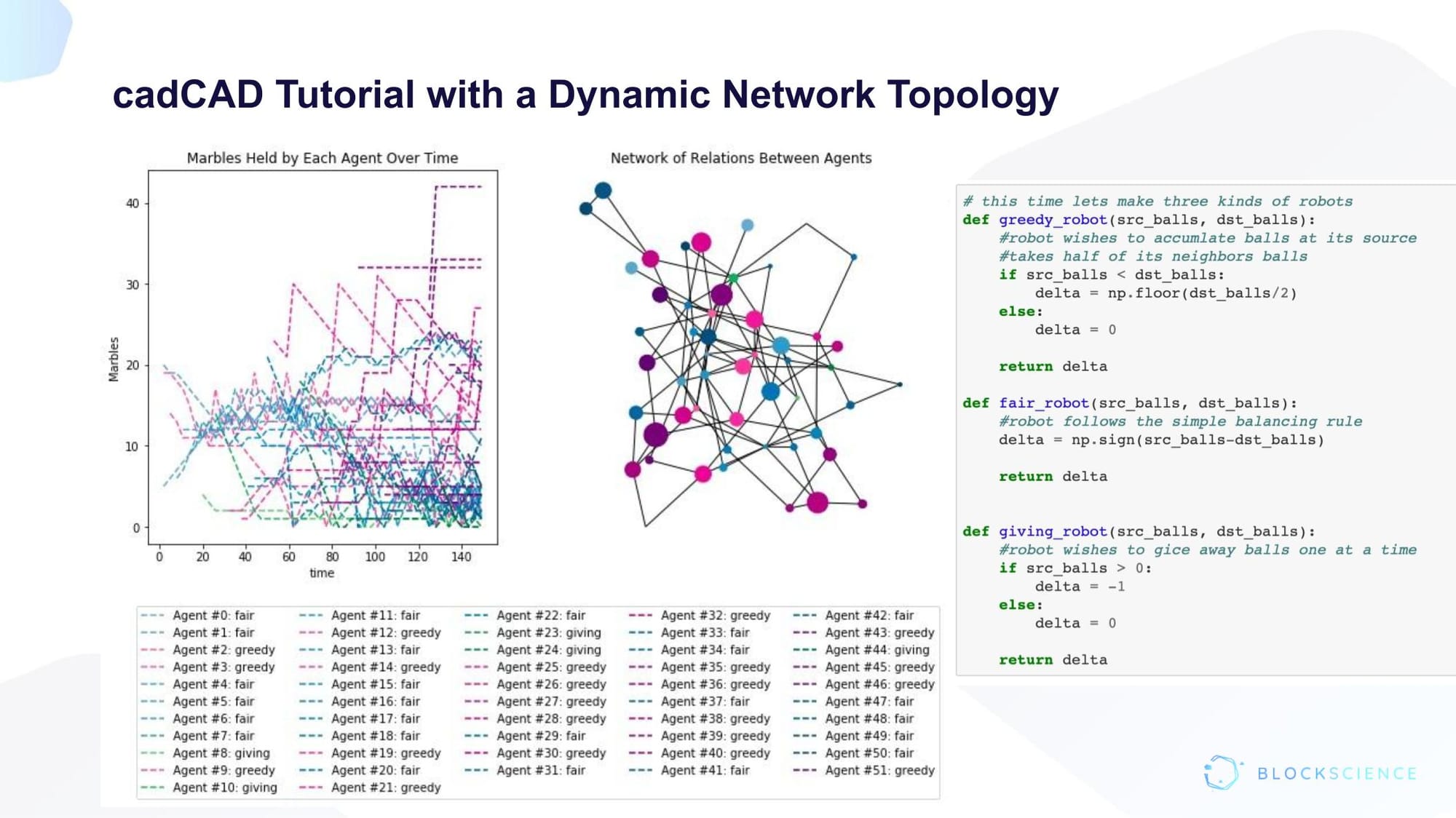
Unpredictable Dynamic Networks
[00:13:20] The cadCAD tutorial example presents a simple network of robots that like marbles. There are three different kinds of robots with different strategies:
- some robots like to take marbles
- some robots like to give people marbles
- some robots like to have the same amount as their friends
Chaos ensues! Not only do the marbles move between the robots, but the actual graph itself will change. Even in this simple system, we see that emergent dynamics are not very predictable.
Adaptive Systems
[00:14:11] When designing we start by understanding the unpredictable nature of complex systems, we make reasonable assumptions, while recognizing that systems adapt and change themselves in multiple ways. The notion of interaction patterns (and subsequent feedback loops) can be dictated at various levels - smart contracts, protocol, or ecosystem levels, as well as by people.
What is interesting about our blockchain-enabled systems is that we embed algorithmic feedback

Dynamic Activity in Adaptive Systems
* Changes the state of the system
* Changes what's allowed to happen
* Changes what is done
[00:15:46] Within systems where dynamic adaptation is apparent it is often appropriate and necessary to introduce governance - to further negotiate, enable, direct, and prepare for change. The Ethereum fork is referenced.
Complex Systems Design and Analysis
Working examples are discussed in detail to highlight concepts from computational social science, required for complex social and economic systems design and analysis.
ETH-DAI Pairs on Uniswap
[00:17:00] Example of ETH-DAI trading pairs on Uniswap conveys the concepts of dynamic systems, difference equations, and reproducibility, highlighting the use of models for counterfactual analysis, behavior modeling, and "what-if" analysis.
Crypto Kitties
[00:19:00] The Crypto Kitties Crypto Midwives example highlights the concept of multi-scale emergence, how incentives can change the behavior of agents, and how agent behavior can change the shape of the system through composable smart contracts
As soon as you have this reward, people are going to find the best ways to engage or participate with that reward.
Cyber-Physical Systems
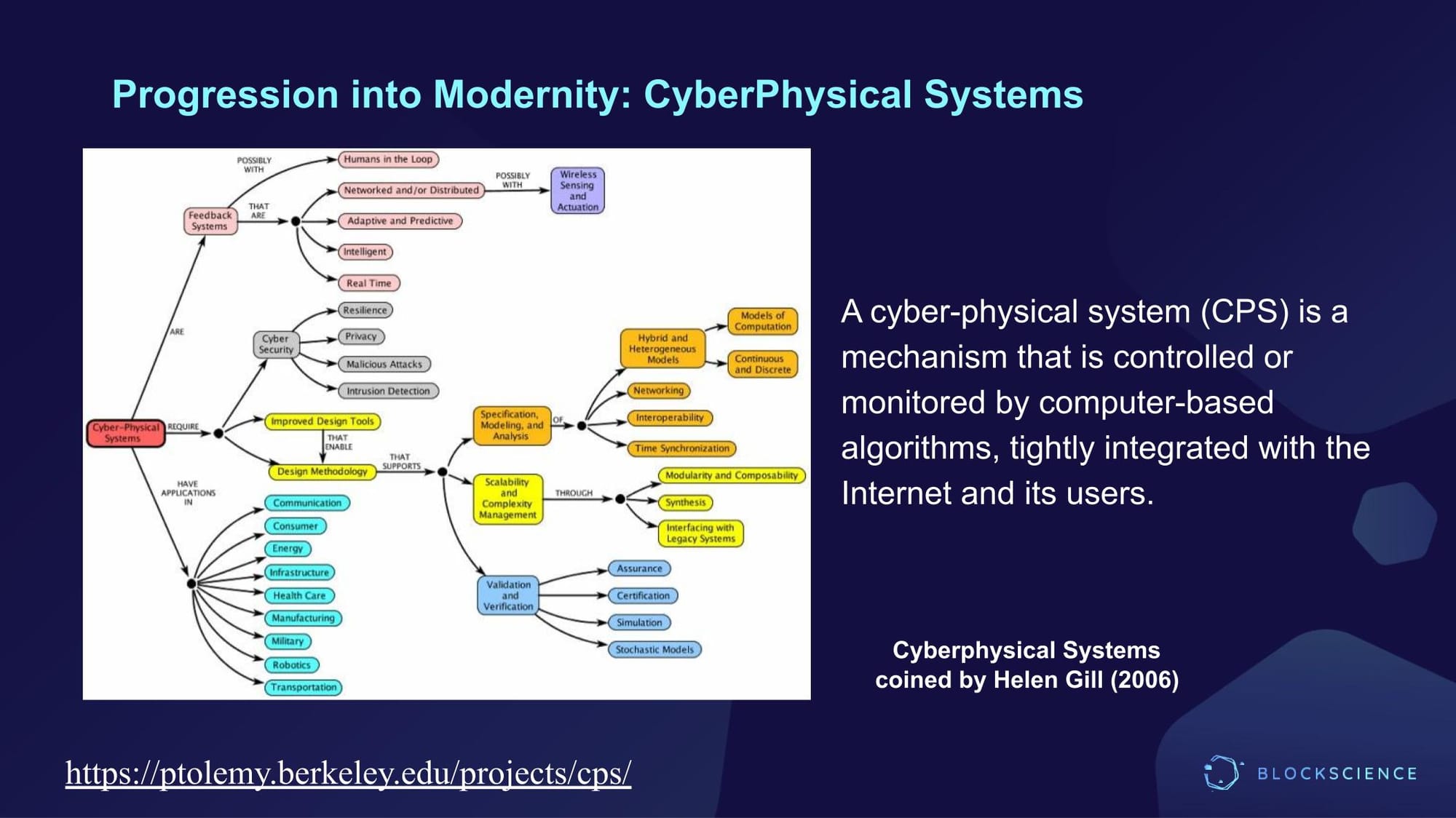
[00:21:12] Cyber-physical systems are known to be adaptive and predictive, networked or distributed systems that have humans in the loop, closely resembling cryptosystems.
A cyber-physical system (CPS) is a mechanism that is controlled or monitored by computer-based algorithms, tightly integrated with the Internet and its users. The term was coined by Helen Gill (2006)
The reality of designing, testing, deploying, operating, and governing socio-technical cryptoeconomic systems requires significant work, including rigorous high-quality modeling, testing, counterfactuals, and broadly speaking, digital twins - computational representations of large-scale systems that help us understand and manage those systems.
Systems Engineering Lifecycles
[00:24:00] More than the development and deployment of software or infrastructure, it's important to recognize that engineering is a lifecycle, of holistic design and synthesis that benefits from diverse and multiple areas of expertise.

- Technical Specialization: implementation, intergration, operations and maintenance.
- Complexity Management: Complicated work to create a simple experience for the public while making sure that it's safe for the user/public
- Full Life Cycle: Ethical responsibility from ideation to end-of-life
- Human-Centric: An engineer is obligated to public good above the fiduciary duty.
The important thing about designing and modeling these systems is that you are always making subjective choices whenever you impose an objective measure on the system. And that doesn't mean don't do it. You absolutely have to do it. You just have to acknowledge when you do it. You have to make it as explicit as possible.
Governance as Adaptive Maintenance
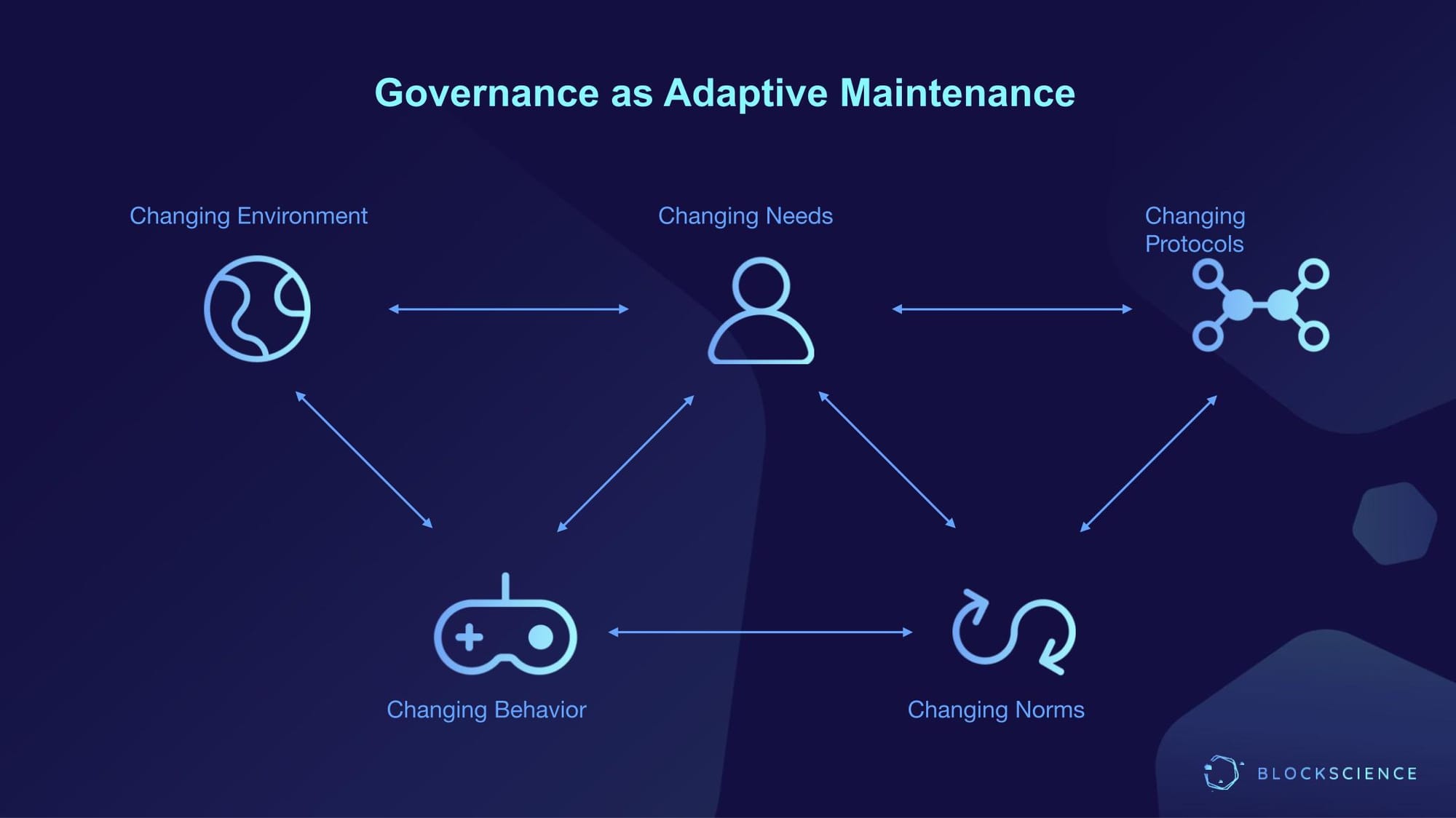
We must expose and test assumptions, and be prepared to make changes due to misalignments between the objectives we've chosen and the feedback process - whether via governance, an external regulatory process, or simply the recognition that the system might need to change its goals to remain a good service infrastructure for the community it's supporting. Governance as a form of adaptive maintenance is important within cryptoeconomic systems. It cannot be ignored but is yet to be adequately defined.
About BlockScience
BlockScience® is a complex systems engineering, R&D, and analytics firm. By integrating ethnography, applied mathematics, and computational science, we analyze and design safe and resilient socio-technical systems. With deep expertise in Market Design, Distributed Systems, and AI, we provide engineering, design, and analytics services to a wide range of clients including for-profit, non-profit, academic, and government organizations.

